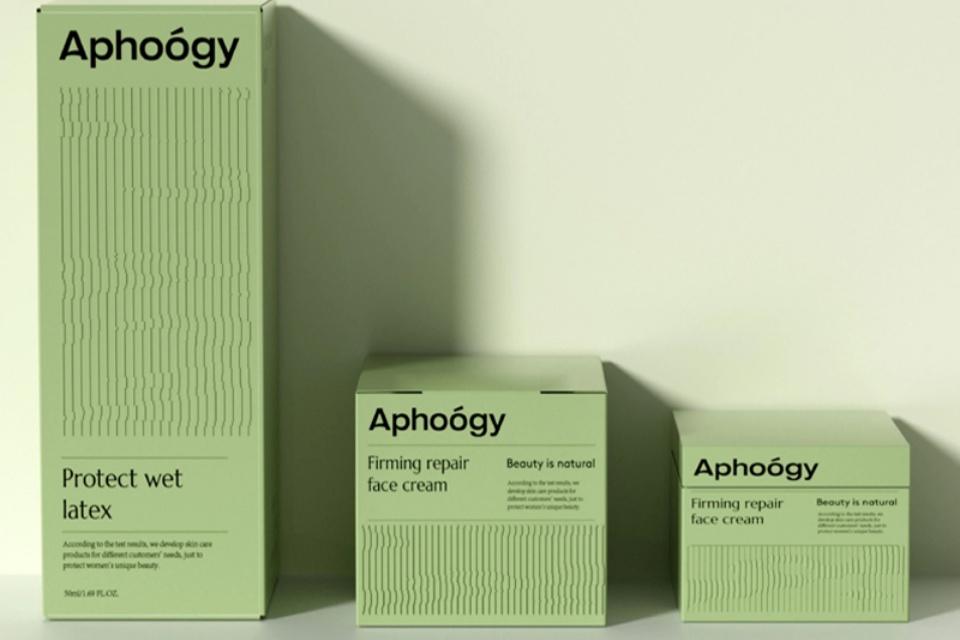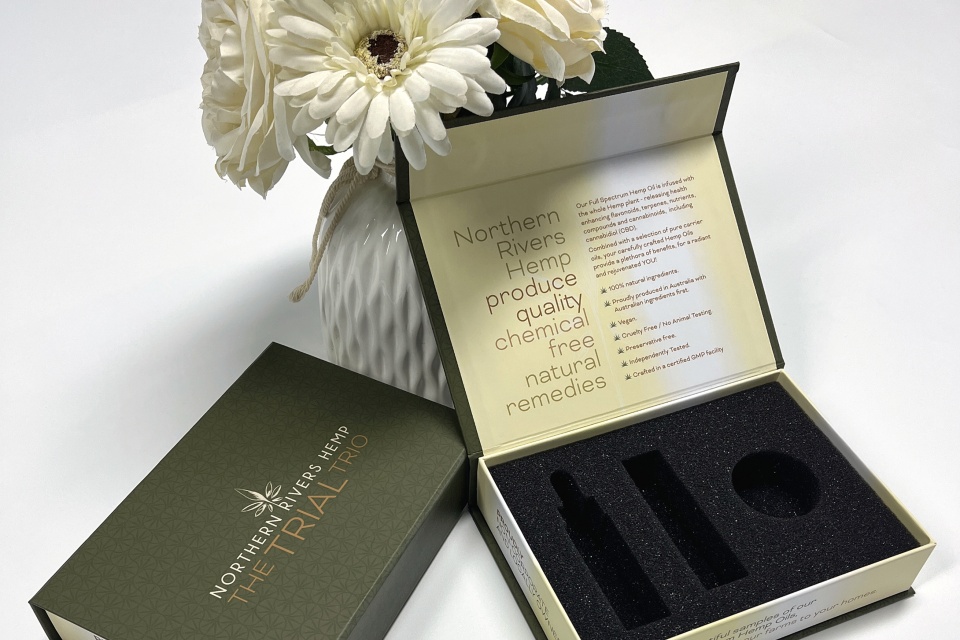Our News
Cosmetic Packaging For e-Commerce Vs. Retail
Cosmetic Packaging For e-Commerce Vs. Retail
Summary
Cosmetic packaging for e-commerce and retail encompasses two distinct approaches tailored to their respective sales channels, each with unique priorities and objectives. E-commerce packaging is primarily focused on durability and functionality, ensuring that products arrive safely at consumers' doorsteps. In contrast, retail packaging is designed to attract consumers in physical stores, employing visual elements that enhance shelf appeal and encourage purchases. This divergence in purpose highlights the evolving landscape of the cosmetics industry, as brands adapt their packaging strategies to meet the demands of both online and offline shopping environments.
The rapid growth of e-commerce has prompted significant changes in packaging design and materials, with an emphasis on protecting products during transit while creating memorable unboxing experiences for customers. Brands are increasingly investing in sustainable packaging solutions to address environmental concerns, as consumer preferences shift towards eco-friendly materials. On the other hand, retail packaging must balance aesthetics and functionality, leveraging eye-catching designs and essential product information to drive sales and consumer engagement in-store.
Notably, the cosmetic industry faces challenges related to consumer behavior, sustainability pressures, and the need for compliance with safety regulations across both channels. As brands navigate these complexities, they are compelled to innovate continuously, fostering connections with consumers while addressing their environmental footprint. The contrasting goals of e-commerce and retail packaging underscore a pivotal aspect of modern marketing strategies in the beauty sector, highlighting the significance of packaging as a vital component of the overall customer experience.
As the cosmetic packaging landscape evolves, brands must embrace technological advancements and omnichannel strategies to enhance consumer engagement and loyalty. By integrating sustainable practices and adapting designs to meet the diverse expectations of online and in-store shoppers, companies can position themselves for success in an increasingly competitive marketplace.
E-commerce Packaging
E-commerce packaging is specifically designed to protect products during the shipping process, ensuring that items purchased online reach consumers safely and intact. Unlike retail packaging, which focuses on aesthetics and advertising the product inside, e-commerce packaging prioritizes durability and functionality to withstand the rigors of transportation.
Characteristics of E-commerce Packaging
E-commerce packaging, often referred to as external packaging, utilizes robust materials such as corrugated cardboard boxes and poly mailers that are lightweight and easy to ship. The primary goal of this packaging type is to minimize damage during transit while providing a satisfactory unboxing experience for the consumer. E-commerce packages often feature branding and marketing messages printed directly on them to enhance brand recognition and create a memorable experience for the buyer.
Materials and Design Considerations
When selecting materials for e-commerce packaging, several factors come into play. These include the product type, size, weight, and necessary barrier properties to protect against environmental factors like moisture and air. Popular materials include cardboard for its sturdiness and eco-friendliness, as well as plastics for lightweight and flexibility. The choice of material also impacts the overall cost, sustainability, and effectiveness of the packaging in safeguarding the product during shipping.
Sustainability in E-commerce Packaging
As consumer demand for sustainable products grows, many brands are shifting towards eco-friendly packaging solutions. Sustainable packaging materials such as recycled cardboard and biodegradable plastics are increasingly preferred to minimize environmental impact. A significant percentage of consumers in the beauty industry express a preference for recyclable or refillable packaging, which reflects a broader trend towards sustainability in e-commerce.
Market Trends and Growth
The e-commerce packaging market is projected to experience rapid growth, with an anticipated global market value of $49.2 billion, potentially doubling to $98.2 billion within a few years. This growth is driven by the increasing prevalence of online shopping and the need for effective packaging solutions that align with consumer expectations for quality and sustainability.
Retail Packaging
Retail packaging refers to the design and construction of packages that are displayed for sale in physical retail stores. It serves not only as a container for products but also as a marketing tool, aiming to attract customers and facilitate their purchase decisions. Retail packaging incorporates a brand's logo, color scheme, and imagery while also presenting essential product information such as ingredients, expiration dates, and safety warnings.
Key Functions of Retail Packaging
The primary function of retail packaging is to showcase the product effectively, ensuring it stands out on the shelves. Effective retail packaging is designed to sell the product without the assistance of a salesperson. This can be achieved through various means, such as using bold colors, attention-grabbing fonts, and transparent windows to reveal the product inside. Additionally, packaging must comply with shelf display standards to optimize visibility and accessibility for shoppers.
Aesthetic and Functional Design
Retail packaging must strike a balance between aesthetic appeal and functional requirements. It should be visually captivating to attract shoppers while being structurally sound to protect the product during transportation and handling. Sturdy materials are essential to prevent damage from rough handling throughout the supply chain and to ensure that products arrive on store shelves in pristine condition. Moreover, the tactile feel of packaging can influence customer decisions, as a luxurious or sturdy package can enhance the perceived value of a product. Considerations regarding the space the packaging occupies on shelves are also crucial; packaging must be compact enough to allow for easy inventory management by retailers.
Best Practices in Retail Packaging
When designing retail packaging, brands should focus on the following best practices:
- Durability: Packaging must be robust enough to withstand the rigors of transport and display.
- Clear Information: Accurate product labeling and information should be easily visible to comply with regulations and inform consumers.
- Brand Consistency: Packaging design should maintain a consistent brand identity through the use of logos, colors, and typography, reinforcing trust and recognition among consumers.
- Minimization of Waste: Adopting minimalistic designs can reduce waste and align with contemporary consumer preferences for sustainability.
By combining these elements, retail packaging can significantly influence consumer behavior, drive sales, and enhance brand loyalty. The overall goal is to create a memorable unboxing experience that resonates with customers and encourages repeat purchases.
Comparative Analysis
The distinction between cosmetic packaging for e-commerce and retail environments is pivotal in the beauty industry, as both serve unique purposes while addressing the needs of different distribution channels.
Packaging Focus and Objectives
E-commerce packaging prioritizes protection and cost-efficiency, ensuring that products withstand the rigors of transportation and handling during delivery. It often incorporates durable materials such as poly mailers and cardboard boxes, designed to minimize damage and reduce shipping costs. In contrast, retail packaging emphasizes aesthetics, shelf appeal, and branding, aiming to attract consumers in a physical store environment. The visual branding elements are crucial in creating an immediate connection with customers, as the package is often the first point of contact with the product.
Design Considerations
The design elements differ significantly between e-commerce and retail packaging. E-commerce packaging focuses on practicality and durability, often sacrificing visual appeal for functionality. However, it can still include branding elements to enhance the unboxing experience. Retail packaging, on the other hand, leverages colors, typography, and intricate design features to create an engaging display that communicates the brand's identity and resonates with consumers. This focus on visual elements can enhance perceived value and encourage impulse buying in-store.
Regulatory Compliance
Both types of packaging must adhere to specific regulations, particularly concerning safety and labeling. In the cosmetic industry, compliance with guidelines set by organizations such as the FDA in the United States and similar entities globally is essential for both retail and e-commerce packaging. While e-commerce packaging may not face the same visibility constraints as retail packaging, it must still ensure that products are adequately protected from contamination and environmental factors during transit.
Consumer Engagement
Consumer engagement strategies also vary between the two. E-commerce brands often focus on the unboxing experience, aiming to create memorable moments through thoughtful packaging design that enhances the customer's interaction with the product. This includes easy-to-open designs and personalized touches that prolong the sense of discovery during unboxing. In contrast, retail packaging must capture attention quickly, using bold designs and attractive layouts to draw consumers in as they browse physical shelves.
Challenges and Considerations
Consumer Behavior and Preferences
The beauty and personal care retail landscape is influenced by a variety of consumer motivations, particularly regarding purchasing channels. Research indicates that 38% of consumers prioritize habit and convenience when selecting where to shop, with 29% citing product availability and 23% emphasizing a good selection of products as key factors. In addition, there's a notable trend towards sustainability; 76% of consumers prefer recyclable materials, and 51% actively seek eco-friendly packaging. This shift towards sustainable preferences underscores the need for brands to adapt their packaging strategies to align with consumer values.
Channel Challenges
Despite the ongoing growth in the beauty market, estimated to reach $580 billion by 2027, the industry faces significant challenges, particularly in the direct-to-consumer (DTC) segment. DTC sales have experienced a notable decline, especially within Pure Play and Multilevel Marketing (MLM) channels, with MLM alone seeing a -25.3% drop in sales year-over-year. This decline necessitates a reevaluation of distribution strategies and highlights the importance of maintaining accessibility and reliability in product offerings.
Sustainability Pressures
The cosmetics industry contributes substantially to environmental waste, with around 120 billion plastic packaging units produced annually, significantly impacting landfills. As consumers become increasingly aware of environmental issues, the pressure for brands to adopt sustainable practices is mounting. Companies are now seeking to implement sustainable packaging solutions, such as biodegradable and refillable options, which not only reduce waste but also appeal to a growing demographic of environmentally-conscious consumers.
E-commerce Adaptations
In response to the challenges faced in the retail environment, e-commerce platforms must prioritize customer convenience and reliability. Reliable delivery services and effective returns management are critical components of a successful online shopping experience. Additionally, brands need to enhance personalization in their offerings, fostering a deeper emotional connection with consumers to promote loyalty and repeat purchases.
Case Studies
Unboxing Experiences in E-Commerce
Case studies and success stories in unboxing illustrate how innovative packaging strategies can elevate consumer experiences. A notable example is the gaming company Ragnarok, which enhanced its customer satisfaction and brand loyalty through a revamped unboxing process. By adding personalized touches such as surprise gifts, Ragnarok transformed the unboxing experience into a memorable event. To generate excitement, they hand-delivered their initial batch of Mysterious Boxes to influential gamers on platforms like YouTube and Facebook. The luxurious packaging and unique surprises during the live unboxing events received high praise from the public, showcasing the power of engaging packaging in e-commerce marketing.
Boots: A Leader in Health and Beauty Retail
Boots, a prominent health and beauty retailer in the UK, has successfully leveraged consumer behavior models to enhance its marketing strategies. By understanding the customer decision-making process, which encompasses five stages—problem recognition, information search, evaluation of alternatives, purchase decision, and post-purchase evaluation—Boots has tailored its offerings to meet diverse consumer needs. This approach has allowed them to effectively differentiate their products and appeal to a wide demographic. The company also adapts its strategies based on the consumer adoption process, which includes stages of awareness, interest, evaluation, trial, and adoption. This understanding has facilitated Boots in introducing new products that resonate well with their audience, further reinforcing their position in the beauty industry.
The Impact of Sustainable Packaging
As the cosmetics industry faces increasing pressure to adopt sustainable practices, several brands are making significant strides in this area. At the 2024 E-Pack Summit, key insights highlighted the importance of balancing product protection with sustainability. Brands are now tasked with finding eco-friendly packaging solutions that do not compromise on product safety. This is especially crucial for cosmetics and personal care brands, which heavily rely on packaging to convey their brand image and maintain consumer trust. The summit emphasized innovative partnerships and strategies to address the growing challenges of e-commerce packaging waste.
These case studies reflect the diverse strategies that brands are employing to enhance their packaging and, ultimately, their consumer experience in both retail and e-commerce environments.
Future Directions
The future of cosmetic packaging is poised to be shaped by several key trends, particularly in the context of e-commerce and retail dynamics. As brands seek to meet the evolving expectations of consumers, the integration of sustainability, technology, and design innovation is becoming increasingly paramount.
Sustainability and Eco-Friendly Practices
A significant focus for future cosmetic packaging is sustainability. Brands are increasingly adopting eco-friendly materials such as biodegradable plastics, recycled materials, and sustainably sourced paper to meet consumer demand for environmentally responsible products. Innovative solutions, like refillable containers and compostable cushioning made from cornstarch or algae, are gaining traction, allowing brands to reduce packaging waste while fostering long-term customer relationships. The emphasis on sustainable packaging not only minimizes environmental impact but also enhances brand image among eco-conscious consumers.
Technological Integration
Technological advancements are transforming packaging design and functionality. Smart packaging solutions, which utilize sensors to provide real-time product information during shipping, are becoming more prevalent. This technology not only improves supply chain efficiency but also enriches the consumer experience by ensuring product integrity and transparency. Additionally, the development of user-friendly designs that prioritize easy access and usability can significantly enhance customer satisfaction and encourage repeat purchases.
Omnichannel Strategies
As retailers bridge the gap between online and offline shopping, the concept of omnichannel packaging is emerging. Brands are integrating experiential elements that cater to consumers' desire for cohesive and engaging shopping experiences across platforms. This approach not only improves customer interaction but also addresses the unique requirements of both e-commerce and retail packaging. By understanding the distinct needs of each channel, brands can optimize packaging for shelf appeal, protection during shipping, and overall consumer engagement.
Aesthetic and Functional Design
The future of cosmetic packaging will also see an increased empha+sis on aesthetics and functionality. Packaging designs that effectively attract target demographics-whether through sleek, minimalistic styles for high-end markets or vibrant, bold patterns for younger consumers—will be crucial. Companies will continue to test and refine packaging based on customer feedback to ensure that it meets usability standards and enhances the unboxing experience, further solidifying brand loyalty.
Categories
Latest News
Contact Us
Contact: Aaron Lee
Phone: +8613570866244
Tel: +8675529490260
Add: Li Songlang 2nd Industrial Zone,No.18,FengTang Rd,Guangming New District


